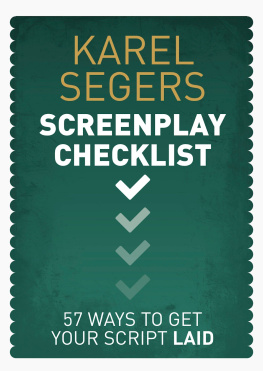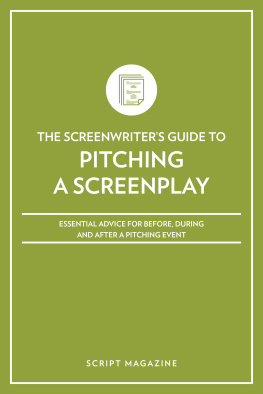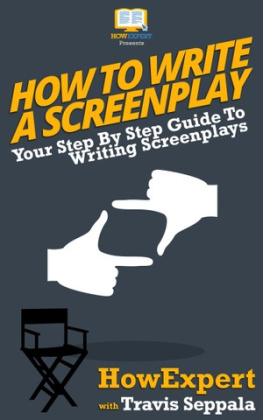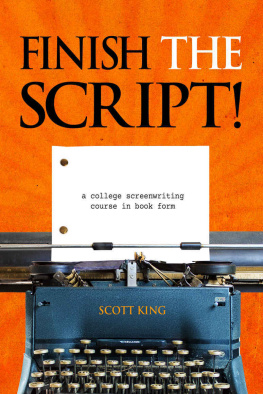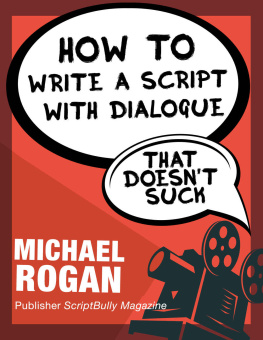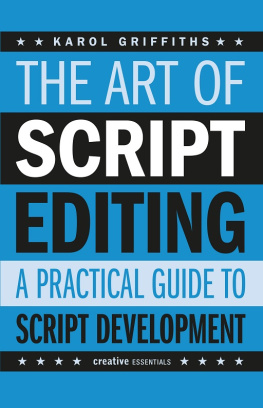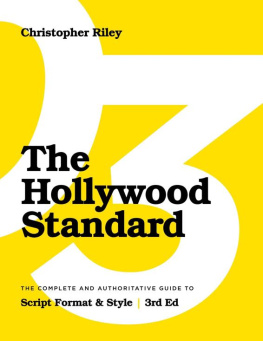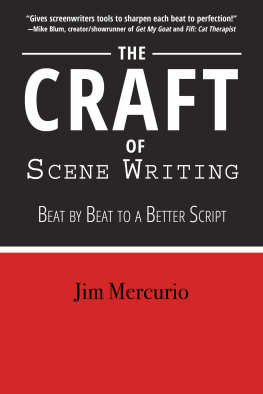CONTENTS
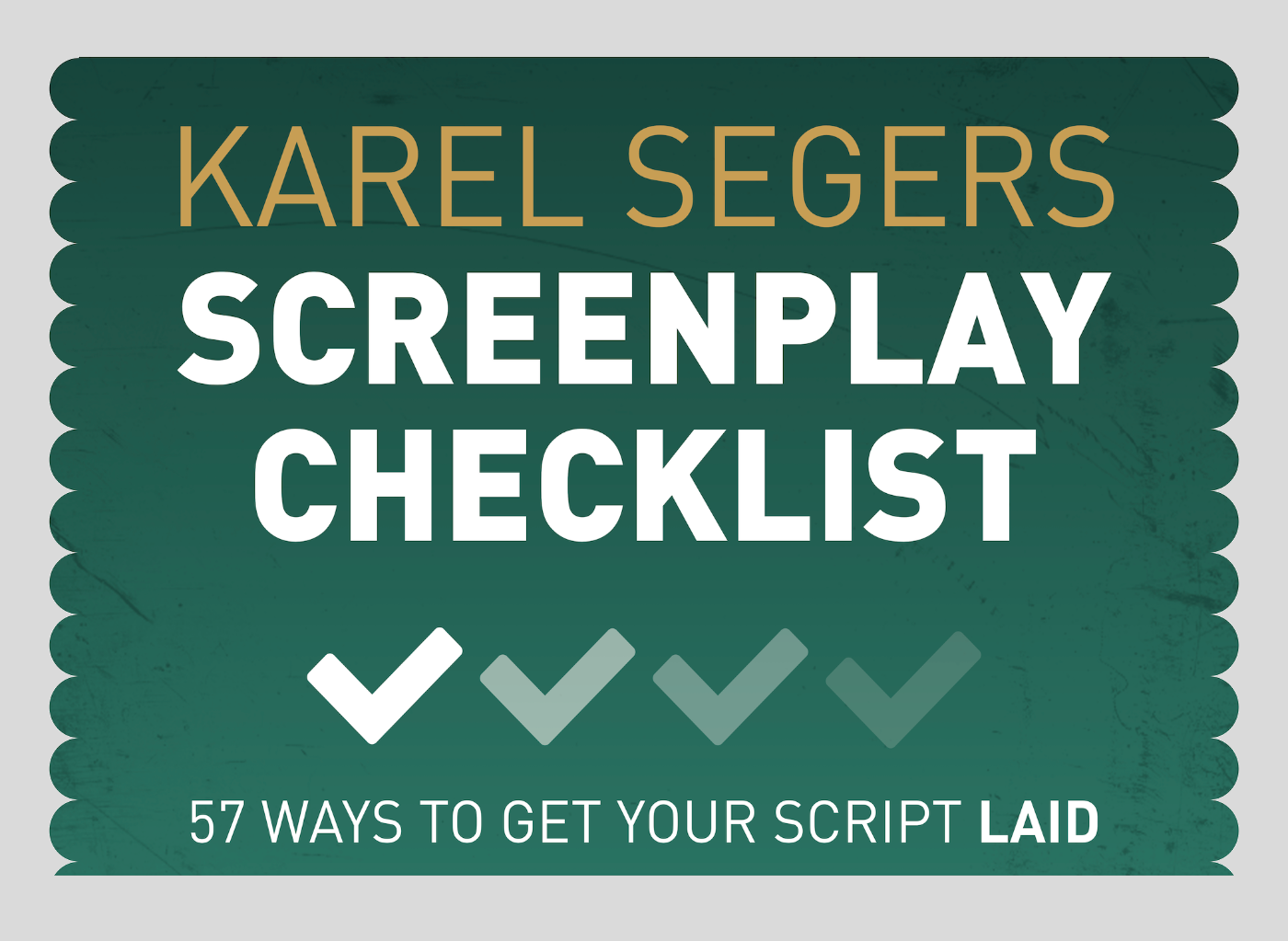
The Screenplay Checklist
57 Ways To Get Your Script Laid
by Karel Segers
v2.7
27 November 2013
Published by The Story Department
Copyright Karel Segers 2009-2013
Smashwords Edition
INTRODUCTION
This e-book is not about what story to tell but about how to tell it.
Im a firm believer that the principles of effective storytelling can be learned. Adopt the right techniques and you will be able to write your story in an effective way, so you can seduce the reader into the magic of your movie.
This list will help you avoid breaking that magic.
The tips have been compiled from countless screenplays by beginning and produced screenwriters. Even if sticking to these rules doesnt guarantee a fabulous story, breaking the principles is a safe recipe for not getting your story read. After all, you dont want your script to smell like amateur.
The list is unique in that the sections correspond with the elements in the script, from Scene Heading and Action/Description to Parenthetical, so you can easily check them each time you do a revision.
Some screenwriting software allows you to do a find-and-replace within each specific element, so you can work your way systematically through the script and avoid any orphaned errors.
But what about all the broken rules in produced screenplays? Well, as you become successful and more confident, you will develop your own trademark style, breaking free from the conventions.
For experienced screenwriters, there are no rules - only tools. All you want is to give the reader a great read and this can be a wonderful motivation to design your own rules. Ignorance is not.
I would like to acknowledge the handful of people who have helped me with their feedback: Jamie C., Jamie W., Cameron, Nina and Tone.
My gratitude also goes to all my students and clients who have turned to me for advice on their work and whose scripts, both brilliant and flawed, have inspired me to put this list together.
Finally, on behalf of all readers, a big thank you for using the Screenplay Checklist and giving us a better experience.
Write on!
- Karel Segers
THE 3 C'S OF A SCREENPLAY
Clarity - Conciseness - Color
A screenplay should be clear and economical, yet entertaining to read.
Clarity
Just like the story must be clear and meaningful, so must the very words on the page.
When I read a script, I dont want to stop and ask what does this mean ever. It hampers the flow of the read and the magic is broken. Always make sure that what you write is transparent and simple to understand. Someone once said that a great screenplay can be understood by an eleven year old. Okay, maybe I prefer that to be a high school student.
Conciseness
Unless you are writing an epic the whole world is dying to see, your film should be two hours or less.
Similarly, a spec script must not exceed 110 pages and those pages must be tightly written. Cut the fluff, trim the script to its bare essentials. The reader will thank you while s/he turns pages as the story progresses rapidly. If you can condense one page into half a page without losing any information or disturbing the flow, do it. Equally, if the events on one script page can be shown on screen in less than one minute, you must condense it.
Color
Using clear and concise language doesnt mean the script has to be dry and boring. You must excite the reader with your choice of words, without drawing attention to them. This may be a paradox, but one that most great screenwriters happily take on.
At this point your task is akin to that of the novelist, to find the exact right word for the occasion and seduce the readers with the result. Did you know that the most precise words are often also the most colorful ones?
Particularly when you describe movement, youll find that strong verbs make your description sing with strong color and melody. It is not a bad idea - especially for non-native English speakers - to specifically study those verbs in the English language that denote any type of movement or action.

1.
GENERAL
Beat
Checkifandhowyou are using beats.
Check your script for the following:
dont over-use beat
never open dialogue on a beat
avoid beat in description
If youre not sure what Im talking about, I should distinguish three different meanings or uses of beat:
a pause in dialogue
a pause in description
a scene or sequence climax
The latter example is really what we mean when we talk about a beat sheet and its not relevant here.
Lets look at the first two instances.
Even though William Goldman used beats in dialogue abundantly, I dont recommend you do this. It gets repetitive or distracting very easily and there are usually better ways to achieve the same.
A beat in description and dialogue indicates that nothing happens and the moment is held. This way of emphasising an emotion can mostly be replaced by something more powerful and more precise. If nothing happens on the screen, be clear as to where you want the audiences attention to go. If this is the point when we need to realize something, feel free to insert a gentle cheat (see also under Invisibles).
In dialogue, try a brief description of a characters response. In any case, dialogue can never open with (BEAT).
In the following excerpt from Avatar, Cameron could have used beat but opted for a better solution:
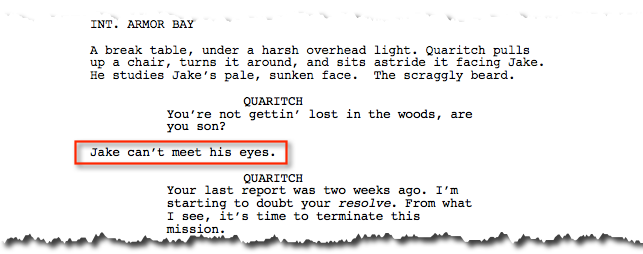

Brackets
Avoid the use of brackets.
When I see brackets, I assume what is contained within them is not as important as everything else - so I can skip them. If I dont need to read it, why is it in the script in the first place? In a great screenplay EVERYTHING matters.
The exceptions are a characters age and the parenthetical element. See elsewhere in this guide on how to get your parentheticals right.

Character Habits
Dont repeat habitual action early in the script.
I sometimes read scripts where the writer wants to make it clear that the character does something often or regularly. Dont do this by repeating the action on the screen as it gets really tedious.
Remember this principle: whatever we see a character do in the first few minutes of the story, we will safely assume is part of their normal life.

Clichs
Check your script for clich language, situations or actions.
Personally I dont think there is anything wrong with cliches, except if they are used in the exact same way weve seen them so often. They should be used sparsely, for contrast, comedy and quick character introductions when speed is more important than depth.

